Backyard Naturalist: Audrey Dunn – Beavers can provide a great benefit
|
Published: 02-23-2024 1:39 PM
Modified: 02-26-2024 10:53 AM |
People are always excited to find the tracks of elusive predators that we infrequently encounter in person — foxes, bobcats, bears. It’s exhilarating to discover evidence of these wild neighbors, and finding their tracks in the snow never fails to light up my imagination: How close in time did we come to sharing this space together? What brought them here? Where are they now, and what are they doing?
I say this with the caveat that I’m a beginning naturalist, and more often than not, I’m stumped from the start. Am I getting excited over dog tracks? Will I ever get to see more than frozen footprints? These chance encounters with wild lives remain mere riddles unless I happen to be in the presence of an expert who can help fill in the blanks.
Turning my attention to a certain semi-aquatic mammal, on the other hand, has been more gratifying. I’m referring to an animal with webbed hind feet, a slap-happy tail and a notorious reputation for causing floods – the North American beaver.
First of all, you don’t have to wait for snowfall to create a canvas for tracks in order to find signs that we share our landscape with these stout little engineers. And because evidence of beaver activity doesn’t quickly disappear, you can visit the same beaver marsh in every season and take note of slight changes. Walk along the banks of a beaver pond in late summer, for example, and you’ll be able to make out beaver-sized channels running perpendicular to the bank — pathways out of the water and onto land.
Take the same walk in winter, and you just might find that these channels have turned into snowy, two-foot-wide trails that lead all the way to the beaver’s next felling project or favorite grove of tasty trees. If you’re lucky, you might see drag marks from a branch or sapling that was brought back to join the other birch, willow or maple meals cached outside their den in preparation for ice-over.
The most-endearing signs of beavers, in my opinion, are their homes. Besides humans, few mammals construct dwellings that conspicuously rise up and above the surrounding habitat, easily visible to the casual observer. Beaver lodges sometimes resemble a haphazard pile of sticks and, other times, a living mound of green growth. In the winter, you may be able to determine whether a lodge is in use by looking for melted snow at the top of the mound of sticks, or if you’re lucky, by the sight of steam rising upwards like a chimney.
Article continues after...
Yesterday's Most Read Articles
 Jaffrey hosts inaugural Monadnock Comic-Con
Jaffrey hosts inaugural Monadnock Comic-Con
 Christopher Stultz of Antrim sentenced to 18 months for false statements
Christopher Stultz of Antrim sentenced to 18 months for false statements
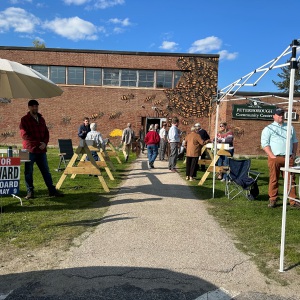 Meet the candidates in this year’s Peterborough town election
Meet the candidates in this year’s Peterborough town election
 Mary Lawler remembered for a life of service
Mary Lawler remembered for a life of service
 Monadnock Paper Mills hires Chloe Jones
Monadnock Paper Mills hires Chloe Jones
 Fair builds a sense of community
Fair builds a sense of community
Muskrats also build lodges — like small versions of beaver lodges, made of non-woody vegetation — but it always brings a smile to my face to remember their other housing option, moving in with beavers. Although not incredibly common, muskrats have been observed helping with lodge upkeep in exchange for shelter during the winter months.
Of course, the most-infamous signs of North America’s largest rodent are neither their channels nor tree drags nor lodges, but their dams. Old, new, big, small — these stick structures are ubiquitous throughout the Monadnock region. I’ll admit that they can make kayaking difficult, and if I owned a home near one I might be worried. We have to keep in mind, though, that beavers are ecosystem engineers. They aren’t simply creating dams; rather, they are creating entire ecosystems which are, by and large, beneficial.
Beaver dams obstruct the movement of a river or brook, forcing the water to spread over the landscape. The result is a shallow, slow- moving and nutrient-rich marsh or pond where plant species can take root and thrive in places they otherwise could not. This creates a complex vegetative structure that attracts a diversity of fauna. In effect, when beavers create habitat for themselves, they are creating habitat for countless other species too.
An additional benefit of beaver dams is, perhaps counterintuitively, flood mitigation. Because water moves at a slower rate and lower volume through beaver habitat, their dams actually serve as a stabilizing force, protecting downstream communities from flash flooding while also reducing erosion and improving water quality.
With that in mind, let’s zoom out for a moment, all the way out to the scale of satellite imagery. Yes, that’s right — evidence of beavers is visible from space. The very hydrological changes that mitigate flooding also make their habitat relatively drought-resistant, to the extent that their watery ecosystems have even been observed functioning as firebreaks and likely wildlife refuges during wildfires out west.
For instance, after a fire swept across Idaho in 2018, charring 65,000 acres of land, one lush pocket of emerald green was observed by satellite -- a beaver wetland. Ensuing studies found that, post-wildfire, beaver ponds improve water quality and promote native plant species recovery. Scientists are now optimistic about the role that beavers might play as a nature-based climate-change solution.
So, the next time you come across an approximately five-inch-long, webbed footprint in the snow, I hope you’ll take a moment to observe not only the nearby gnawed trees and fresh wood shavings, the lodge and the dams, but also to look around and wonder what else is beaver evidence. To question which plants became established there because of beavers, which animals took up residence there because of those plants, and which species might be able to thrive there in the future, despite a changing climate. And, finally, to understand that you are simply one of many individuals who has entered the domain of the beaver.
To answer my oft-asked tracking questions, Where are they now? What are they doing? In winter I like to imagine beavers warm in their lodge, surrounded by all they’ve created, taking a well-deserved rest.
If you’re interested in observing beaver evidence for yourself, visit the protected Hiroshi Land in Peterborough or the Eastview Trail in Harrisville. Trail information for both spots can be found at harriscenter.org/trails.
Audrey Dunn is communications manager at the Harris Center for Conservation Education in Hancock.

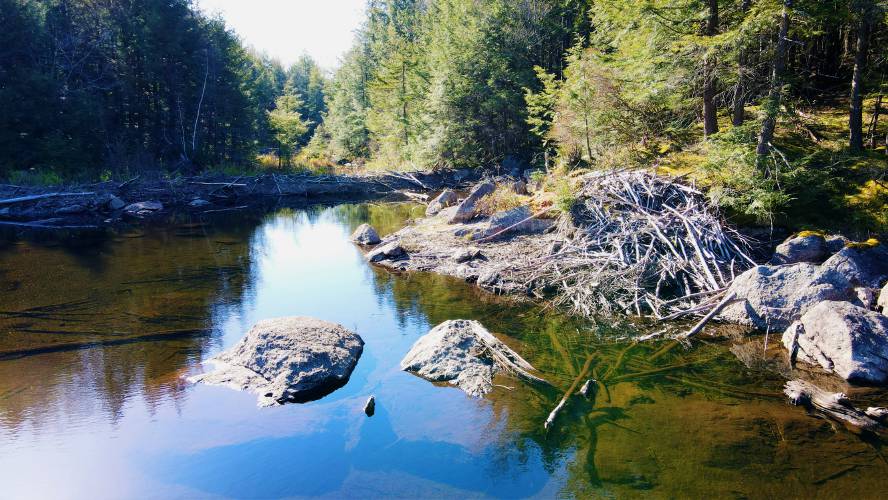
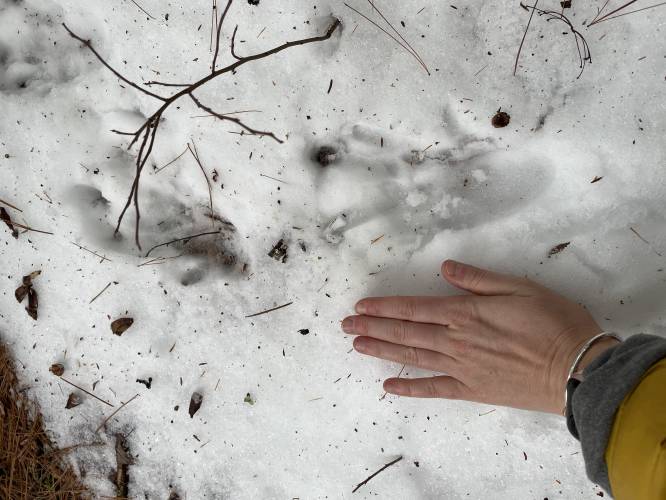
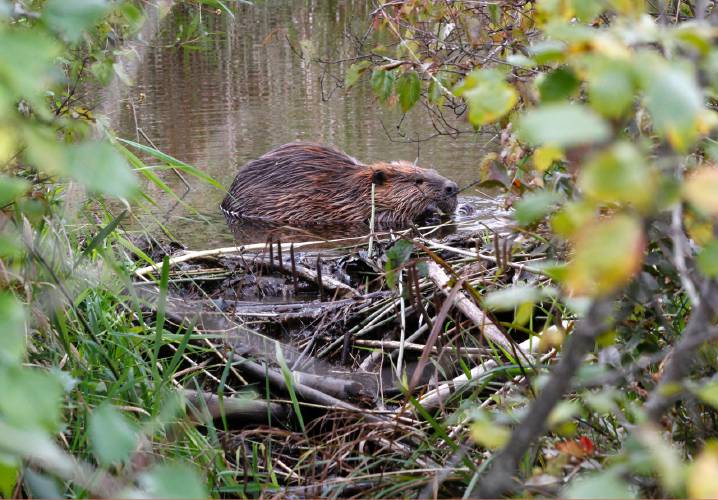
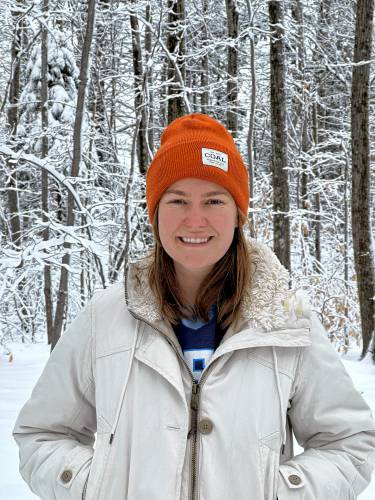
 Restorative justice author Leaf Seligman to speak at the Mariposa Museum
Restorative justice author Leaf Seligman to speak at the Mariposa Museum Firelight Theatre co-founder Nora Fiffer takes ‘Another Happy Day’ to Beverly Hills Film Festival
Firelight Theatre co-founder Nora Fiffer takes ‘Another Happy Day’ to Beverly Hills Film Festival
